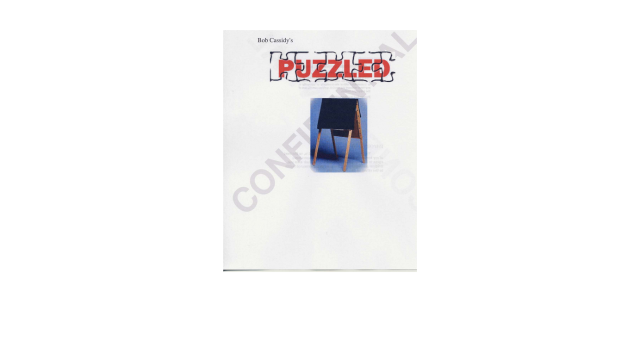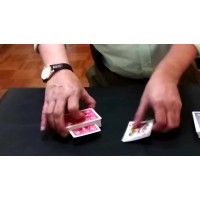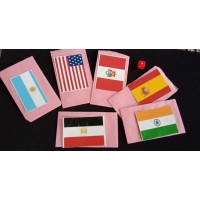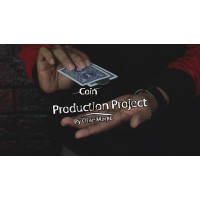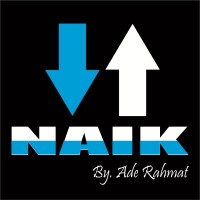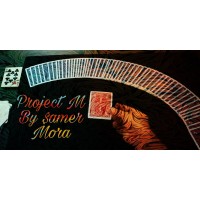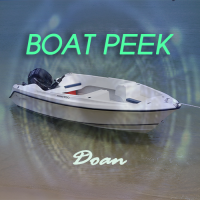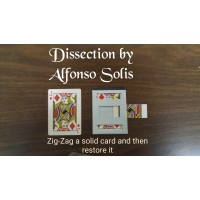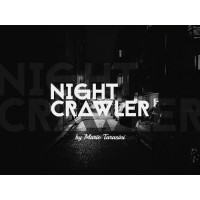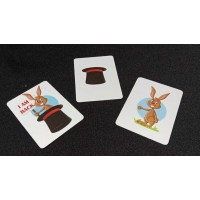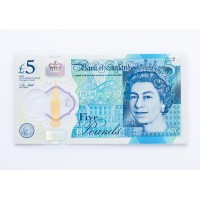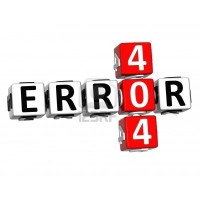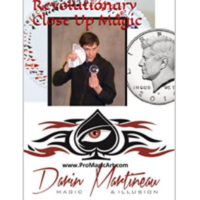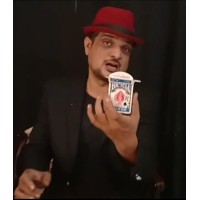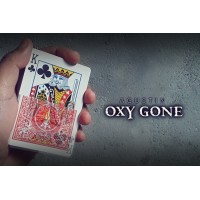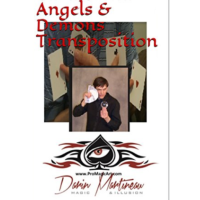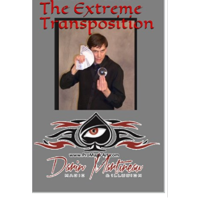Puzzled by Bob Cassidy
- Product Code: I2197B
- Reward Points: 10
- Availability: In Stock
- $5.99
-
$2.99
- Price in reward points: 299
THE ONLY VERSION OF THE CLASSIC PUZZLE EFFECT THAT APPEARS TO BE A NEAR TEST CONDITIONS IMPOSSIBILITY.
The method used in Puzzled is completely original with Bob Cassidy. It is based on an "out-of-left-field logical disconnect" that will positively fool anyone who sees it.
The premise of the effect was created by the late English mentalist, Romark, back in the 1970's. A few years ago there was a minor hissy fit in the magic world about the creation and ownership of a jigsaw puzzle effect involving an image of the Mona Lisa. (But apart from the fact that the effect used a jigsawed version of Da Vinci's masterpiece rather than a map of the United States was about the only thing that distinguished it from Romark's effect - the rights to which, by the way - along with all of Romark's material, are owned by mentalist Bob Dorian.)
The effect is simple and direct - an easel, covered with a large cloth - stands on the stage. A spectator is handed a boxed jigsaw puzzle which, when assembled, will be a complete map of the United States. There is a separate piece for each of the states. She freely selects a puzzle piece - any State - from the box and holds it up for the audience to see. The mentalist removes the cover from the easel and a completed puzzle is seen, mounted on a large mat. It is, the performer explains, 'almost' an exact duplicate of the boxed US Map puzzle that was given to the spectator. He says 'almost' because the assembled puzzle on the easel has one piece (one State) missing.
Wouldn't it be an amazing coincidence if. . . .?
The piece the volunteer has been holding up for all to see is the very piece that is missing from the mounted puzzle!
While Bob's version of the effect was inspired by Romark's creation and is similar in effect, the resemblance is purely superficial. Any well versed mentalist or magician could, upon seeing Romark's or the later Mona Lisa version, easily work out a method. And the chances are they'd end up forcing a puzzle piece.
Unfortunately - there are more than a few intelligent laymen who would arrive at the same conclusion.
Puzzled, on the other hand, appears to be completely impossible. Here's why:
The spectator is handed THE OPENED PUZZLE BOX and is asked to look at the the pieces before freely selecting one.
THERE IS NO SWITCH OF PIECES
ONLY TWO PUZZLES ARE USED - ONE IN THE BOX AND ONE PERMANENTLY MOUNTED AND DISPLAYED ON THE EASEL. THESE ARE GENERIC PUZZLES THAT ARE AVAILABLE ANYWHERE.
That's right - the volunteer (whom the performer has never met before - there is absolutely no preshow work, secret cueing or confederacy involved) LOOKS AT THE PIECES AND SEES THEY ARE ALL DIFFERENT BEFORE SELECTING ANY ONE. The performer can be standing with his back turned if he so desires.
It is a one-man routine and can be performed anywhere and completely surrounded. No specially prepared puzzles are required. You can use any puzzle you like. The easel is unprepared and there is only one puzzle mounted on it beneath the cloth.
AT THE CONCLUSION OF THE EFFECT THE MENTALIST MAY GIVE THE BOXED PUZZLE TO THE VOLUNTEER AS A SOUVENIR OF A REMARKABLE "COINCIDENCE". (Which is what it must have been, because it is perfectly clear that the performer had absolutely no opportunity for trickery of any kind)
There are no furtive moves - everything is perfectly clean and direct and - best of all - Puzzled is practically self-working!
Everything you have just read is true. The method fools everyone. More significant to the working pro, however, is the fact that it is clean-cut and direct. And the routine is not only amazing - it is extremely entertaining as well.
Most important of all is the fact that it is exclusive. You won't see Puzzled being hawked all over the Internet and on display in every theme park or Vegas strip "Magic shop".
That is all we can say here. The rest you will find in Puzzled.
1st edition 2005; 18 pages.
word count: 2478 which is equivalent to 9 standard pages of text
Reviews (0)
Related Products
Conversation As Mentalism Vol 2 by Mark Elsdon
Mark Elsdon - Conversation As Mentalism Vol 2 PDF ??It is my firm belief that the title of..
$1.99 $4.28
Perfect Cents by Cosmo Solano
Any number is named. That number matches the EXACT amount of change in your pocket. Every. Single. T..
$3.99 $9.99
Mon-Key by Jeff Prace
An automatic mechanism intricately assembled inside of a house key.MON-KEY reimagines a classic..
$1.99 $5.99
Mario the Maker Magician Penguin Live Lecture
Learn the secret inner workings of one of the best shows in magic. Learn how to build your own trick..
$2.99 $5.99
Latex Cube by Syouma
video onlyIt is a cube gimmick made of latex. It's originally designed by Tejinaya. This allows you ..
$1.99 $3.99
1957 Card Annual by Laurie Ireland
Super Do As I DoA Double ChangeKings On The LoosePreface To Out Of This WorldBilly Wiggins' Card Tri..
$1.99 $5.99
Mona Lisa'S Secret by Card Shark
You show your spectators several masterpieces of art printed on playing cards. One of the paintings ..
$1.99 $4.99
Crossroads Crosswords by Bob Cassidy
A unique effect. The performer produces - or borrows - a crossword puzzle magazine of the type commo..
$10.99 $27.00
The Vault - Ambition Hole by Dingding
An amazing visual puzzle with a kicker ending.Perfect for your virtual presentations.Easy to make.Ea..
$1.99 $12.00
Recommend
Swapping Places by Nicolás Basbous Merlo
A card is selected by the spectator and is placed in the middle of the deck perpendicularly. Then, t..
$3.99 $12.00
Countries & Numbers by Dibya Guha
A few cards bearing names of different countries are handed over to a spectator. He is instructed to..
$3.99 $12.00
Coin Production Project by Obie Magic
Hi, I am Obie Magic from Jakarta, Indonesia. I would like to introduce a coin production project. A ..
$3.99 $14.00
Naik by Ade Rahmat
Remove the gum from the box in a unique way. The chewing gum suddenly appeared on top of the box. Th..
$2.99 $9.00
Project M by Samer Mora
Hello Guys,This project contain 14 effects1-Flash Change2-flash transpo3-two prediction4-Box Transpo..
$2.99 $9.00
Boat Peek by Doan
A very clean method to secretly know a spectator's selected card.Detailed explanation with English s..
$2.99 $9.00
Dissection by Alfonso Solis
Impossibly zigzag a solid card. You show a solid card front and back place the card in a card frame ..
$1.99 $8.00
Nightcrawler by Mario Tarasini
Mario Tarasini did it again. A new Flap system has been developed.This is not a single trick. It’s a..
$4.99 $16.99
Hey, Mr. Rabbit by Dibya Guha
A fun effect with cards bearing pictures of top hats & rabbits, wherein pictures of rabbits asse..
$1.99 $7.00
Noteout by Bilal Abidi
THE DEMO VIDEO IS NOT A CAMERA TRICK! The magician makes a drawing of a folded-up bank note, and sim..
$3.99 $12.00
Error 404 by Rus Andrews
Imagine showing the spectator a deck of cards with a major problem? the problem being none of the fa..
$3.99 $12.00
Revolutionary Close-Up Magic by Darin Martineau
Learn Amazing New Card Magic, Impromptu Magic, Magic with borrowed dollar bills, New ring magic and ..
$2.99 $9.00
Box Escape by Sachin.K.M
A random card is chosen. It is signed and put back into the deck. Shuffled and cut. Then put into th..
$2.99 $11.99
Oxy Gone by Agustin
Take a single playing card, put it on top of the deck. Wave the deck and the card is vanish piece by..
$3.99 $12.00
Angels & Demons Transposition by Darin Martineau
This is an advanced New Close-Up Card Magic ebook. Very Amazing and Super-Visual Close-Up Magic! Dia..
$1.99 $7.00
The Extreme Transposition by Darin Martineau
THE EXTREME TRANSPOSITION BY DARIN MARTINEAU - EBOOKTHE EFFECT: An Impossible New card transposition..
$1.99 $6.00

